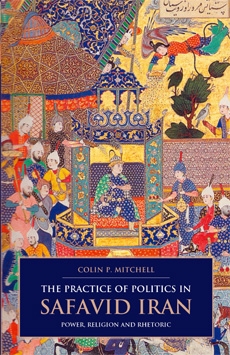|
ACKNOWLEDGEMENTS
The writing and completion of this book would have been impossible without the assistance and advice from a number of individuals and institutions. First and foremost, I would like to express my gratitude to my former supervisor, Maria Subtelny, for her never-ending support and inspiration. It was she who introduced me to the intricate world of medieval Perso-Islamic epistolography, and I imagine I would still be mired in an array of didactic epistolary manuals if not for her patient and insightful guidance. Other sources of scholarly tutelage during my doctoral degree include Virginia Aksan and Roger Savory, who both provided a wealth of suggestions and tips while writing a dissertation on the medieval Safavid dynasty. I would also like to thank Robert McChesney whose remarks as external examiner were invaluable.
The transformation of this project from a doctoral dissertation to a formal academic text has taken me on a lengthy journey, during which I visited places and met individuals who each played a unique and often invaluable role. I would formally like to thank the Social Sciences and Humanities Research Council of Canada and the Andrew W. Mellon Foundation for providing me with postdoctoral scholarships that allowed me to teach and research at the Department of Near Eastern Studies, Cornell University. While sharing co-appointments to Near Eastern Studies and the Society for the Humanities at Cornell, I was able to significantly broaden the scope and depth of this research project. These fellowships also allowed research trips to Iran and Europe, and I would like to thank the Institut Français de Recherche en Iran for providing lodging and institutional support while staying in Tehran. A number of individuals were especially helpful during these sojourns, including Nasrullah Pourjavady, Ehsan Eshraqi, Reza Pourjavady, Ziva Vesel, Justine Lundau, and John Davidson. I would also like to thank the staff and administration of the Central University Library of Tehran University as well as the Library of the Majlis-i Shura-yi Islami. In addition, I would like to express my gratitude to the British Library, particularly Dr. Isa Waley, as well as the staff of the Bodleian Library at Oxford University and the Bibliothèque Nationale in Paris.
V arious individuals have been involved to some degree in helping this project The Practice of Politics xii in Safavid Iran along, either in the form of practical advice or taking time to read sections or chapters. These include: Maria Subtelny, Sholeh Quinn, Bill Hanaway, Paul Losensky, Rudi Matthee, C.E. Bosworth, Sajjad Rizvi, Bert Fragner, Christoph Werner, Maria Szuppe, and Reza Pourjavady. I would also like to indicate my gratitude to Nasrin `Askari for her help with particularly problematic Persian texts. Likewise, I would like to thank my colleague, Amal Ghazal, for her assistance with Arabic translations.
I would like to acknowledge the financial and intellectual support of my department and the Faculty of Arts and Social Sciences of Dalhousie University. The logistical and financial assistance from the BIPS’ Persian Studies series, headed by Vanessa Martin, was very much appreciated, and I’d also like to thank the anonymous, external reviewers for their detailed, insightful comments on my manuscript. On the editorial front, I’m indebted to Paula Sarsen and Brenda Conroy for their tireless efforts.
I would like to thank my parents and extended family, and I am grateful to my sons, Maxwell and Thomas, for providing distractions when they were most needed. Above all else, I cannot understate the sense of indebtedness I feel to my wife Jill for her unwavering support and love.
Introduction
Knowledge is the shaper of words, pouring ideas into the moulds of letters.
— Husain Vā'iz Kāshifī, Makhzan al-inshā
(“Treasury of Epistolary Composition”), MS, Paris,
Bibliothèque Nationale, Supplément persan, no. 73, fol. 3a.
Cycles of Persian Mytho-history and Abrahamic Prophecy:
Locating “Formational” Safavid Iran
The popular interpretation of the emergence of a robust empire under the Safavid dynasty in 906/1500–01 as a watershed in Iranian history is no surprise, given that one of the more dynamic historiographical undercurrents in this field has been the question of Iran’s ability to survive as a distinct cultural entity after successive periods of domination by Arabs, Turks, and Mongols.1 While the ethnic origins of the Safavid family remain unclear, this “Persian” dynasty promulgated Twelver Shi`ism as state doctrine and arguably laid the foundation in Iran for a well-entrenched and aggressive class of Shi`ite jurists and theologians, who were governed principally by a religious and legal framework first formed in the Arab world. More satisfying explanations for understanding the endurance of an “Iranian” identity probably lie with the impressive variegation of Persian culture that had developed leading up to the Safavid period. Dating back to the Indo-Aryan large-scale migrations of the second millennium BCE, the Iranian Plateau has been an arena of acculturation on a dramatic scale: Mesopotamian jurisprudence, Zoroastrian dualism, Buddhist mystical philosophy, Indian mathematics, Semitic universalism, and Hellenistic political philosophy and ethics. The seventh-century spread of Islam and the subsequent supremacy of Arabo-Islamic culture between the eighth and eleventh centuries only added another dimension to the well-established traditions of syncretism in the region. With the strong Hellenistic and Byzantine influences at work, some have hypothesized an “Irano-Mediterranean” cultural frontier in which Islam “consummated” the monarchical and monotheistic trends of late antiquity.2 With the ongoing Turkic migrations from the Steppe Region after the tenth century and the dramatic ...
|
